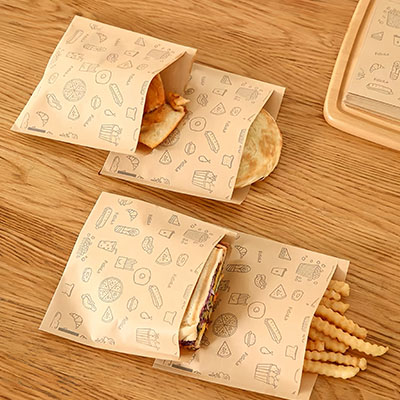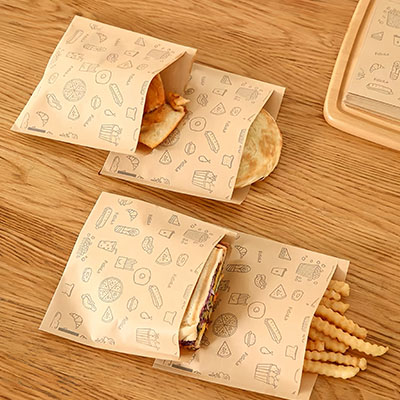
Greaseproof paper bags, also known as grease-resistant or grease-resistant paper bags, are made from a specific type of paper that has been treated to resist the penetration of oil, grease, and other liquids. The main material used to make these bags is paper, but the treatment process enhances its resistance to oils and greases. Here's an overview of the material and treatment process:
1. Base Paper: The base material for greaseproof paper bags is typically wood pulp paper or other plant-based fibers. The paper is chosen for its strength and flexibility, making it suitable for bag-making purposes.
2. Pulp Treatment: To enhance grease resistance, the wood pulp is treated with a chemical process during the papermaking stage. This treatment alters the structure of the paper, creating a barrier that prevents the penetration of oil and grease.
3. Calendering: After the paper has been treated, it undergoes a calendering process. Calendering involves pressing the paper between heated rollers, which further smoothens the surface and improves its resistance to liquids.
4. Coating: In some cases, a thin coating may be applied to the paper to provide additional grease resistance. The coating can be made from various materials, such as wax or a food-safe polymer, which forms a protective layer on the paper surface.

The combination of pulp treatment, calendering, and optional coating results in a paper with excellent grease resistance properties, making it suitable for packaging food items that contain oil or grease. Greaseproof paper bags are commonly used in various food industries, including bakeries, fast food restaurants, and takeout services, where they help keep the food fresh and prevent oil or grease from seeping through the packaging.